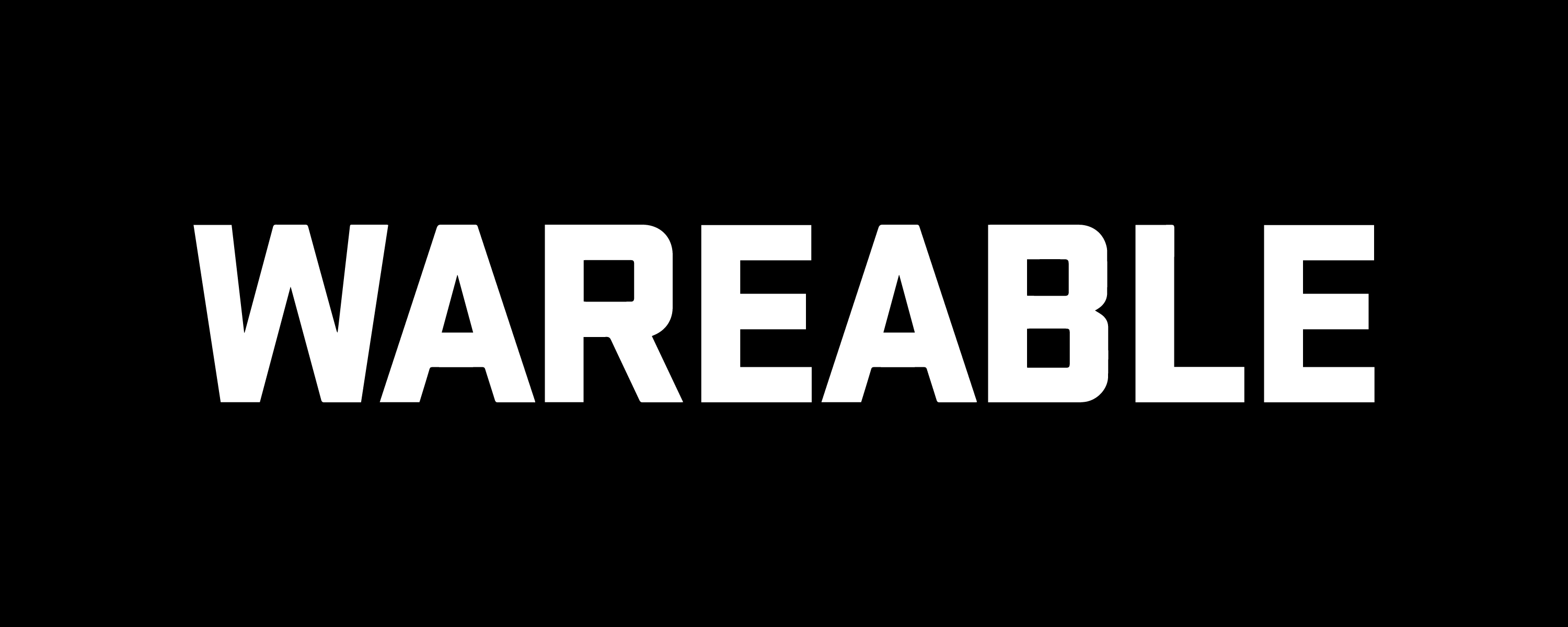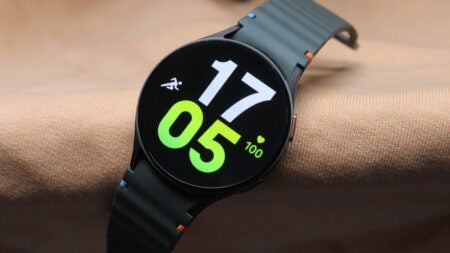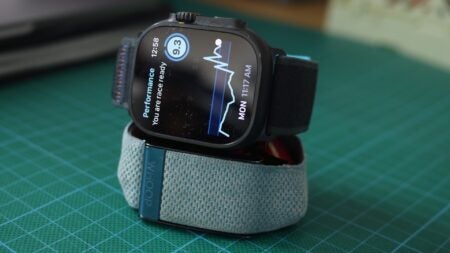The Galaxy Watch Ultra represents Samsung’s first true alternative to dedicated sports watches like the Garmin Epix and Epix Pro.
While it’s previously dabbled with more premium smartwatch releases such as the Galaxy Watch 5 Pro, the Ultra is much more rugged, bold-looking, and a direct shot at the things Garmin excels at – accurate GPS, consistent heart rate, and a wide range of insights and sports modes.
The two watches are very different overall propositions, however. We’ve been wearing both for the last couple of weeks; below are all the key similarities and things to consider when weighing up which is best for your wrist.
Versions
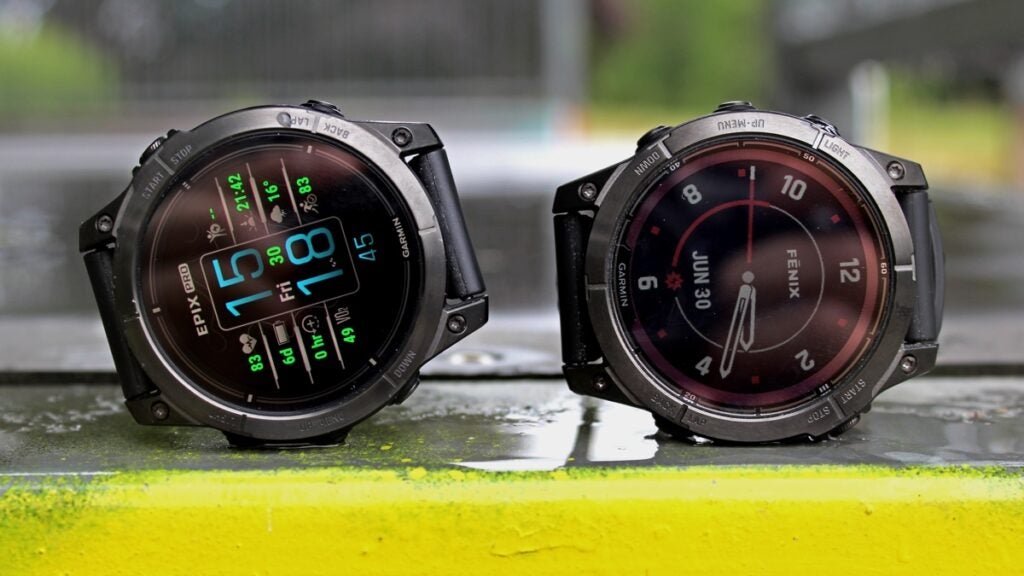
In Garmin’s Epix lineup, you have a whopping amount of decisions to make; do you select the sapphire display glass upgrade, do you go standard or Pro, and, if you do go Pro, which of the three case sizes (42mm, 47mm, 51mm) do you pick.
Also, if you don’t fancy that AMOLED display on the Epix/Epix Pro, you can always check out the Fenix 7/Fenix 7 Pro lineups. These are essentially identical watches, except for the display, but do give you the choice of saving a bit of cash (and gaining more battery life).
That level of choice is unrivalled in the industry, and certainly isn’t available to you with the Galaxy Watch Ultra, with only one 47mm case size on offer.
Garmin Epix Pro (Gen 2) vs. Epix (Gen 2)
Prices
The price is very much in Samsung’s favor, though, as shown below.
The Galaxy Watch’s price tag – $649.99/£599.99 – is surpassed by the entire Epix Pro range detailed below. Note that these prices are without the sapphire upgrade, too, which typically adds around $100/£100.
- Garmin Epix Pro, 42mm – from $899.99 / £739.99
- Garmin Epix Pro, 47mm – from $899.99 / £739.99
- Garmin Epix Pro, 51mm – from $999.99 / £869.99
With the Garmin Epix 3 seemingly on the horizon – plus the fact the newer Epix Pro (Gen 2) has now been out for a year – we are seeing heavy discounts for the standard Epix (Gen 2) model.
Depending on where you shop, this puts it around the same price as the Galaxy Watch Ultra, and, in some cases, it’s actually cheaper.
Design, display, and build

As you’ll have gathered from the above sections, the sheer amount of versions in the Epix (and Fenix) range ensures there are effectively countless different weights, materials, and styles to consider here.
That means comparing directly with the Galaxy Watch Ultra isn’t easily possible, but we have spent our time testing Samsung’s watch against a relatively similar model, the 47mm Epix Pro sapphire edition shown in our images throughout.
So, what are the most important differences between them?
Well, Samsung has actually done a pretty thorough job of making the Ultra as durable as the Epix Pro – and we think both provide the same kind of chunky, outdoor-ready style on the wrist.
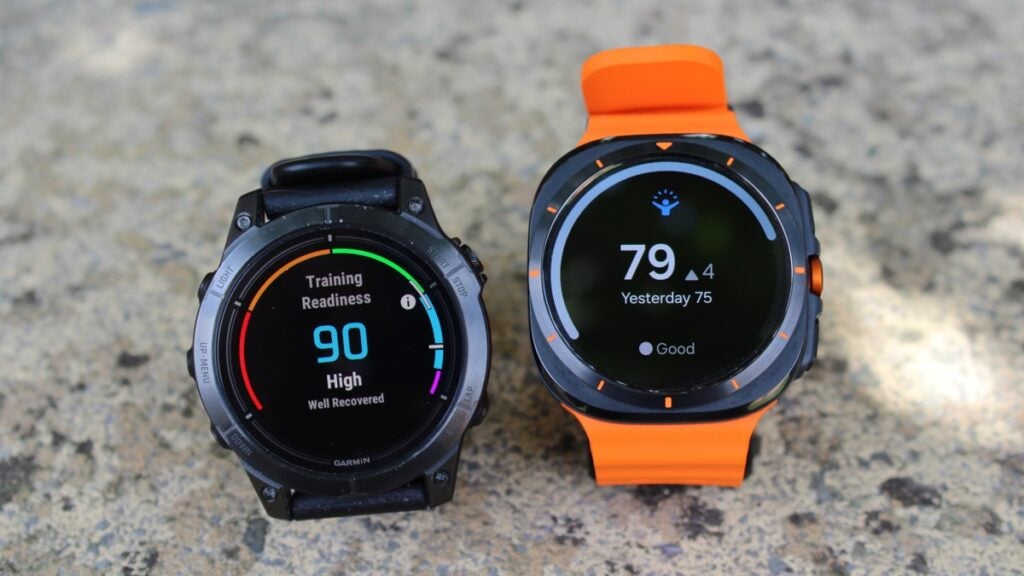
The Ultra is designed to handle open-water swimming (10 ATM water pressure), mountain hiking (9,000 altitudes), and extreme heat (up to 55 degrees Celsius), all while boasting a relatively lightweight-feeling 60g titanium casing and sapphire crystal display which we’ve found pretty scratch-resistant during testing.
Of course, that’s all matched by the Epix Pro, though it does have the odd extra: a flashlight (this sounds like a novelty but is incredibly useful, trust us), those additional case sizes we’ve already mentioned, and much better navigation than the Ultra thanks to the five buttons around the edge.
Where the Ultra has the edge is in the display. The Epix Pro’s AMOLED is nice, bright, and colorful, but the Super AMOLED present on Samsung’s watch is on par with the Apple Watch Ultra 2 as the industry’s best. Its 3,000 nits of peak brightness, particularly, is handy in strong sunlight.
Smart features and OS

While the designs are loosely comparable, these two diverge greatly in the smart features and operating systems – and Samsung is the clear winner.
The Ultra’s One UI 6 Watch (Wear OS 5) skin may be difficult to navigate due to the lack of a physical rotating bezel, yet it is thoroughly feature-packed: there are tons of handy Wear OS apps, widgets, much slicker touchscreen feedback (likely helped by the 3nm Exynos 1000 chip), the crucial addition of LTE/4G as standard, and much more wide-ranging contactless payment support.
By contrast, the Epix Pro (and other siblings in the lineup) doesn’t really compete in this area – it’s a sports watch first and very much a smartwatch second.
You get the odd bit of smart functionality – such as offline Spotify support and notification mirroring – but there are no real third-party apps (unless you count the integrations from the Garmin Connect IQ Store), no option for cellular connectivity, and limited Garmin Pay support in many regions.
It does have one major trump card, though: compatibility with both iOS and Android.
While the Galaxy Watch Ultra is limited to Android phones, you can be in whichever ecosystem you like with a Garmin watch.
Tracking performance
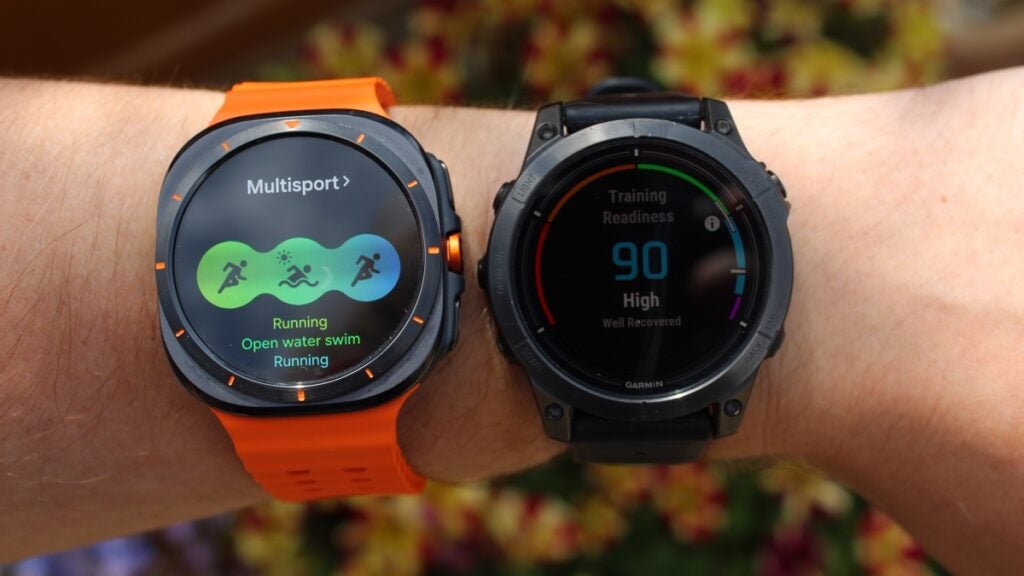
We advise checking out our full, individual reviews for a comprehensive breakdown of accuracy in tracking, but, in the interest of brevity, we will say our testing shows both watches are very accurate in slightly different areas.
The Epix Pro, as you would expect, is the industry gold standard when it comes to dual-frequency (Multi-Band) GNSS tracking, heart rate accuracy (boosted by Garmin’s latest fifth-gen Elevate sensor), and workout profiles (there are sports you can track you didn’t know existed).
It also excels in training-related feedback, providing detailed assessments of your load, readiness, VO2 max, endurance, body battery, and even your ability to tackle hills, among plenty more.

It’s the pinnacle of activity tracking, to be sure, yet it’s much less comprehensive when it comes to sleep tracking (this is much-improved in accuracy but still lacks feedback and insights) and health tracking (a limited amount of features, such as ECG in limited locations).
This is also where the Galaxy Watch Ultra surges. Its sleep tracking and feedback are very detailed and accurate, roughly on par with what we see from Whoop 4.0 and Oura Ring Gen 3, and the health tracking covers plenty of areas.
If you have a Samsung phone, you’ll also gain access to ECG, blood pressure monitoring (via cuff calibration), and sleep apnea detection (in the US and some other territories).

For its great breadth, though, we weren’t especially impressed by the accuracy here; the AGEs Index is undercooked, body composition analysis is inconsistent, and blood oxygen data was way off our baselines from other trackers.
With the redesigned BioActive sensor and the addition of dual-frequency GNSS, though, Samsung has finally produced an accurate workout tracker. We found the Ultra pretty much matched the Epix Pro blow-for-blow when it came to monitoring our distance and heart rate in running, cycling, and swimming activities – and that’s very rare.
Battery life

With a less vibrant display and a more humble smart experience, it’s no surprise that the Garmin Epix Pro range is designed to last much longer than the Ultra.
In our experience, the Epix lineup is good for around six days of typical use – that includes daily GPS tracking, the always-on display enabled, and features like blood oxygen turned on.
This does reduce to around 4-5 days if you’re hammering the outdoor tracking (particularly the more detailed modes like Multi-Band) or offline Spotify, but even heavy usage will see it comfortably surpass what the Ultra is capable of.
We’ve found the battery in Samsung’s premium smartwatch to be pretty inconsistent, and, though we’re confident its drain will even out with future software updates, it’s still only capable of around 48 hours in typical use.
This can stretch to around 65 hours (or beyond) if you disable the always-on display or choose to enlist the power-saving mode, but, akin to the Epix Pro, the battery will suffer if you have prolonged GPS tracking or use the cellular connection.
We typically charge it every other day to keep it topped up and ready, though this is generally only a weekly occurrence with the Epix Pro.
Verdict: Which is best?
Despite featuring some of the same ruggedized design specs, the Garmin Epix Pro and Samsung Galaxy Watch Ultra are for very different people.
If you prioritize a beefed-up smartwatch that boasts an array of third-party apps, cellular connectivity, and a wide-ranging and mostly accurate tracking experience, the Galaxy Watch Ultra is a great fit for Android users. Just remember, iPhone fans, this one isn’t for you – and it probably isn’t the best fit if you require case size variety or long battery life.
The Epix Pro, while generally more expensive, is the ultimate activity tracker. It may not deliver a great health tracking or smart experience, but it’s incredibly comprehensive for those who take their training seriously and demand a durable watch to help them with their goals.
